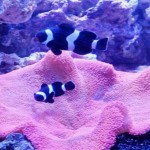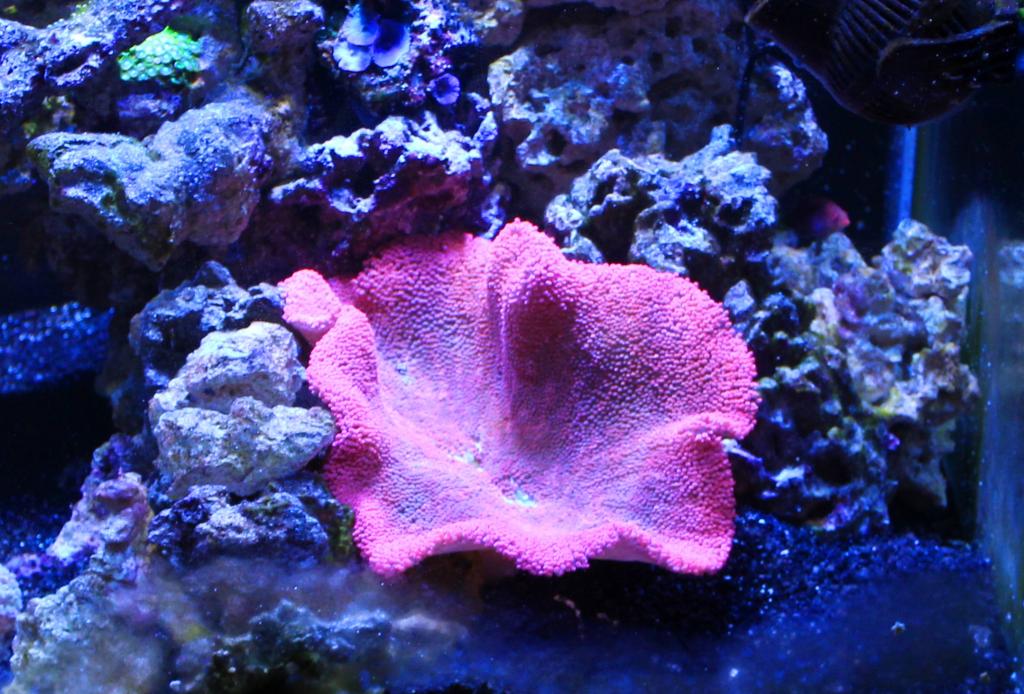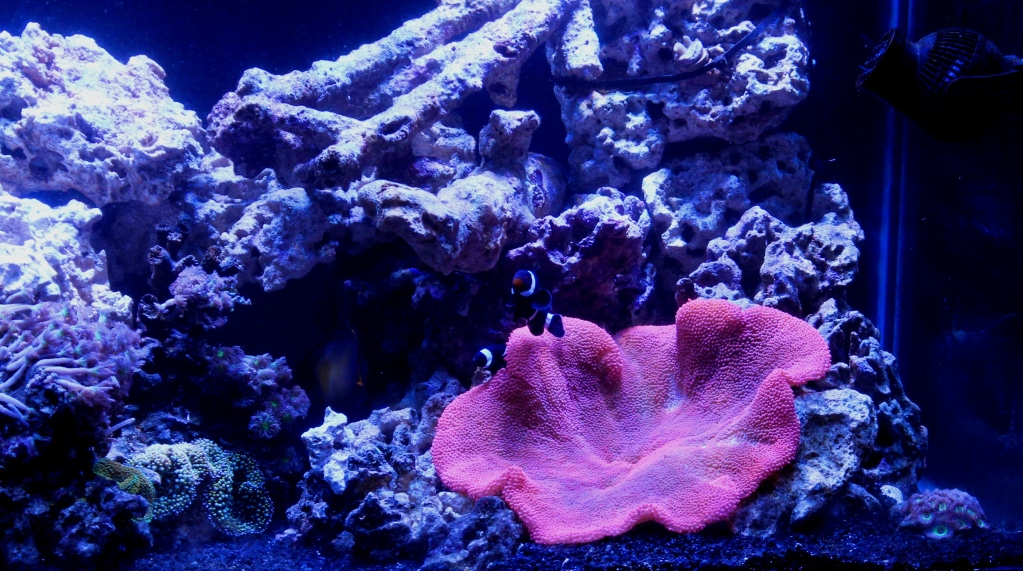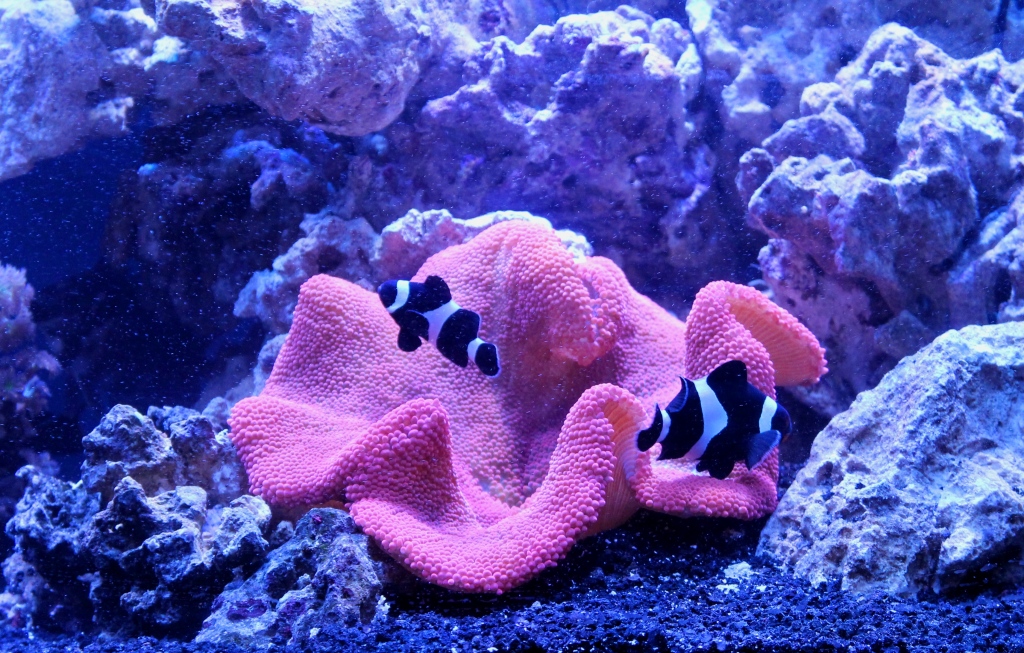Tag Archives: haddoni carpet anemone

Haddoni Carpet Anemone
Common Name: Carpet Anemone, Haddoni Carpet Anemone
Scientific Name: Stichodactyla Haddoni
Reef Safe: Yes
Flow: Low to Moderate
Lighting: High
Care Level: Difficult
Max Size: Around 34 to 36 inches
Appearance:
The haddoni carpet anemone has very short and tightly packed tentacles. The haddoni carpet anemone’s tentacles look more like colored bumps rather than tentacles. I like to think of it as looking like commercial grade carpeting. Their tentacles are around ¼ to ½ inches in length which is a little smaller than the tentacles of a Gigantea anemone. Typically they will be a brown or sandy color but can have other less common colors like: green, blue, and purple. More rare colors are red and pink.



Temperament
A haddoni anemone has been known to eat varied sizes of fish and invertebrates making them one of the more aggressive eaters when compared to other anemones. For that reason, extreme care should be taken when keeping a haddoni anemone in an aquarium with other anemones. While the haddoni anemone has not been known to move, you should not have to worry about that unless there is something wrong with the water parameters. In general, carpet anemones are the least likely to move when provided a good and stable environment that meets their needs.
Environment
The haddoni anemone can get to be a little over 34 inches across which is why I would suggest a tank size of no less than 75 gallons for these anemones. However, a larger tank would make it a lot easier for you to maintain stable water parameters which is something the haddoni anemone truly needs. Haddoni anemones are very demanding and require very good and very stable conditions.
Haddoni anemones are among the more common carpet anemones available in the hobby these days. In my experience, haddoni anemones typically like to attach sink their boot into the substrate and attach their boot to the bottom pane of glass. For this reason they will need a spot on the bottom of you tank with about 4 inches of sandy substrate. They like moderate flow and high lighting conditions.
As with all anemones, they need to be placed in a very stable and matured aquarium. I would only recommend then to hobbyists who are at least somewhat experienced.
Recommended water conditions:
I would refer you to the below article for the typical water conditions that a haddoni anemone will do best in. As a very difficult invertebrate to keep, the haddoni carpet anemone will also need both very good (near perfect) and very stable water parameters for long term success.
https://www.reefaquarium.com/2013/the-basics-of-marine-aquarium-water-parameters/
Diet
While haddoni anemones can thrive under the correct level of lighting (providing all other requirements are met) they can still benefit from the occasional (or weekly) feeding made up of some meeting foods. You must be careful to offer only high quality foods as anemones (in general) can suffer from bacterial infections when offered poor quality foods. The below link can help you with that as well.
https://www.reefaquarium.com/2012/feeding-high-quality-froozen-foods/
Reproduction
It is not very common for carpet anemones to reproduce in a home aquarium, even when kept in ideal conditions. .
Fragging
In my opinion, you should not frag anemones as they are invertebrates and not corals. Although you can find information on line posted by people who claim to have successfully fragged anemones, I would encourage you to read through the below link before considering to attempt fragging an anemone.
http://www.wifeofnerd.com/images/Embryonic%20development%20of%20E.%20quad%20H.%20crisp.pdf
http://www.wifeofnerd.com/images/Broadcast%20spawning%20of%20E.%20quad%20H.%20crisp.pdf
A Word of Caution
Handle this invertebrate, and all Anemones, with care. They have the ability to sting with their tentacles. These stings can cause skin irritations or serious allergic reactions. Always wear protective rubber gloves when handling anemones
The haddoni anemone has very sticky tentacles as compared to a lot other anemones. They are just about the stickiest of all the anemones in the hobby today. Haddonis can be a very aggressive eater as it will not let go if a fish (or your hand) when/if it came in contact with the tentacles. I would almost be willing to classify these guys as aggressive eaters/predators if it wasn’t not for the fact they typically don’t move.
Clownfish
If you would like clown fish, consider the below list of some the more common clown fish that have been known to readily host in haddoni anemones.
Amphiprion ocellaris, or ocellaris clown fish (all color variations)
Amphiprion clarkia, or clarkie clown fish
Amphiprion sebae, or just sabae clown
Amphiprion Frenatus, or tomato clown
For some more detailed information about anemones in general, I would refer you to the below link
https://www.reefaquarium.com/2012/keeping-anemones/